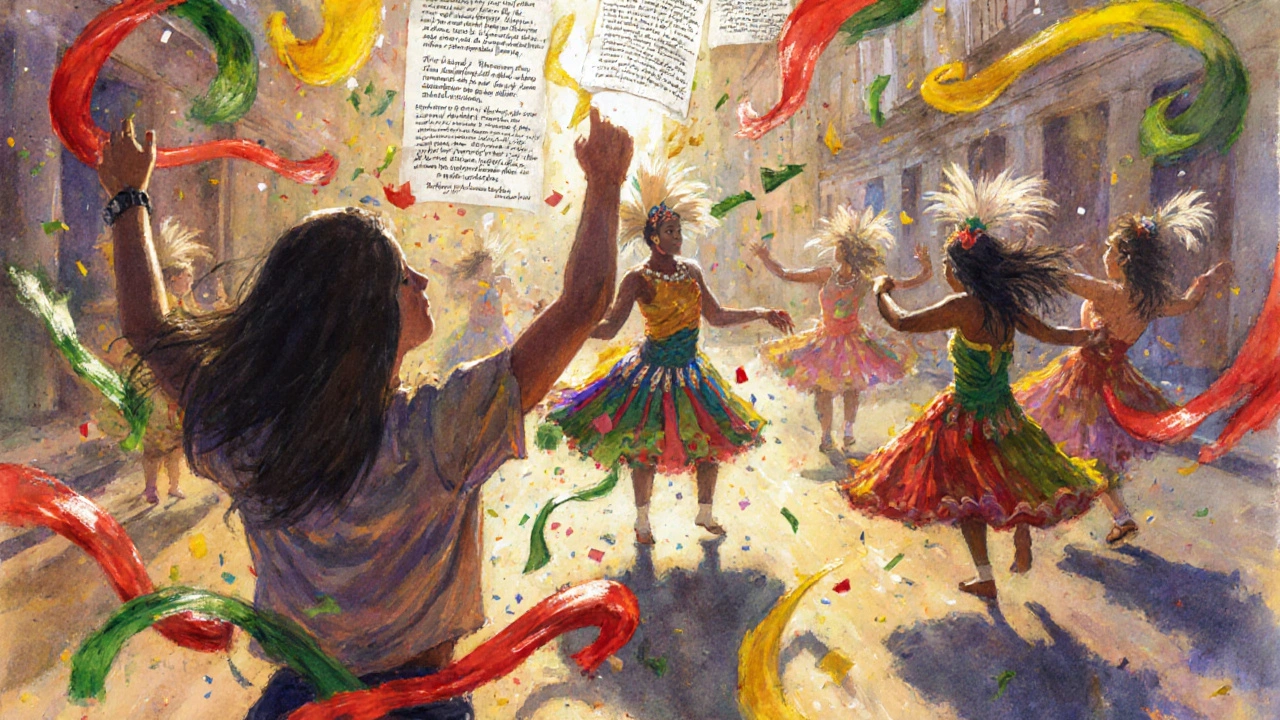
Cultural Narrative Essay Balance Calculator
How to Use This Tool
Enter your essay text to calculate the percentage of narrative versus analytical content. Academic guidelines recommend a 60/40 split: 60% analysis and 40% narrative.
Why this matters: Cultural narrative essays must balance personal storytelling with scholarly analysis. Too much narrative makes it feel like a memoir, while too much analysis makes it feel too academic.
Analysis Results
Ready to ImproveNarrative Content: 40%
Personal stories and descriptive elements
Analytical Content: 60%
Cultural analysis, scholarly references, and critical insights
Key Recommendations
- Maintain current balance between narrative and analysis.
- Ensure each narrative segment connects to a broader cultural insight.
- Review transitions between personal story and scholarly analysis.
Analysis Results
Needs ImprovementNarrative Content: 40%
Personal stories and descriptive elements
Analytical Content: 60%
Cultural analysis, scholarly references, and critical insights
Critical Recommendations
- Add more personal narrative and descriptive elements.
- Include at least one vivid anecdote or personal memory.
- Reduce academic jargon and make the narrative more engaging.
Based on guidelines from the article "Cultural Narrative Essay Explained: Definition, Structure & Writing Tips" which emphasizes the importance of balancing personal storytelling with cultural analysis.
When you hear the term cultural narrative essay is a form of academic writing that mixes personal storytelling with analysis of cultural themes, you might wonder how it differs from a regular essay or a memoir. In short, it’s a bridge between lived experience and broader cultural insight, letting you explore identity, tradition, and social patterns through a compelling story.
What Exactly Is a Cultural Narrative Essay?
A cultural narrative essay is a nonfiction piece that weaves a personal anecdote into the larger tapestry of a cultural phenomenon. Think of it as a conversation between your own memory and the scholarly study of culture. The writer tells a story-often from childhood or a pivotal moment-and then steps back to examine what that story reveals about language, rituals, values, or power structures.
To set the stage, let’s define a few key players:
- Narrative essay is a piece that tells a story with a clear arc, focusing on personal experience.
- Cultural narrative refers to the shared stories a community uses to make sense of its world.
- Anthropology is the discipline that studies humans, their societies, and cultural practices.
- Ethnography is a research method that involves immersive observation and description of a cultural group.
- Cultural identity denotes the sense of belonging to a particular cultural group, shaped by language, customs, and shared history.
- Storytelling is the act of conveying events, ideas, or emotions through narrative.
- Literary device describes a technique a writer uses to enhance meaning, such as metaphor, symbolism, or irony.
Core Elements That Make It Distinct
Three pillars hold up a strong cultural narrative essay:
- Personal story - The essay must start with a vivid, concrete episode from the writer’s life. This anchors the abstract analysis in real experience.
- Cultural analysis - After the story, the writer steps back to explore how the episode reflects wider cultural patterns. This often involves citing scholarly sources or historical data.
- Reflective insight - The conclusion ties the personal and the cultural together, showing what the writer learned about self and society.
Skipping any of these steps leaves the piece feeling either too anecdotal or too academic. The balance is what gives the essay its power.
How It Differs From Similar Formats
| Feature | Cultural Narrative Essay | Narrative Essay | Descriptive Essay |
|---|---|---|---|
| Primary focus | Personal story + cultural context | Personal story alone | Vivid description of a scene |
| Research component | Requires scholarly sources | Optional | Usually none |
| Analytical depth | High - links micro to macro | Low to moderate | Low |
| Typical audience | Academics, cultural studies students | General readers | Anyone interested in imagery |
| Goal | Show how culture shapes experience | Entertain or illustrate a point | Paint a picture |
Notice how the cultural narrative essay blends storytelling with the rigor of anthropology and ethnography. That hybrid nature makes it a favorite assignment in sociology, cultural studies, and interdisciplinary humanities courses.

Step‑by‑Step Guide to Writing One
Follow this roadmap to craft a compelling piece:
- Pick a story that matters. Choose an event that sparked a cultural question - a holiday tradition, a language barrier, or a moment of discrimination.
- Gather cultural context. Do a quick literature search. Look for journal articles, books, or reputable websites that discuss the broader practice you’re examining.
- Outline the essay. Use a three‑part structure: (a) narrative vignette, (b) analytical body, (c) reflective conclusion.
- Write the narrative. Use vivid sensory details, dialogue, and pacing. Treat it like a short story, but keep it factual.
- Insert analysis. After each narrative beat, pause to ask: What does this reveal about power, gender, class, or identity? Cite sources using a consistent style (APA, MLA, Chicago).
- Link back to self. Explain how the cultural insight reshapes your own understanding of who you are.
- Revise for balance. Trim overly academic jargon from the story section and cut excess description from the analysis. Aim for a 60/40 split - 60% analysis, 40% narrative.
- Proofread. Check for tense consistency, proper citation formatting, and voice uniformity.
Real‑World Example
Imagine a student who grew up watching her grandparents perform a traditional Brazilian dance during Carnaval. She recounts the swirl of colors, the drumbeats, and the feeling of community. After the story, she examines how the dance reinforces racial identity and resists colonial narratives, citing works by anthropologists like Gilberto Freyre. In the conclusion, she reflects on how the experience shaped her own sense of belonging in a multicultural city.
This example hits all three pillars: a vivid personal memory, scholarly context, and a reflective insight tying the two together.
Common Pitfalls and How to Avoid Them
- Over‑personalizing. If the essay stays stuck in the anecdote without expanding, it reads like a memoir, not an analysis.
- Skipping sources. Claiming a cultural pattern without evidence weakens credibility. Even a single scholarly citation can lift the piece.
- Jargon overload. Throwing in every anthropological term makes the narrative hard to follow. Define terms like ethnocentrism or cultural hegemony in plain language.
- Weak conclusion. Ending with “I learned a lot” is vague. Summarize the specific cultural insight and its impact on your identity.

Tips for a Polished Finish
Here are a few pro tricks:
- Use dialogue tags sparingly - they add immediacy but can break flow if overused.
- Employ metaphor as a literary device to link micro‑events to macro themes (e.g., “the drumbeat was a heartbeat of the community”).
- Balance first‑person voice with third‑person academic tone. Switch to “we” when discussing scholarly consensus.
- Insert a brief footnote or endnote for cultural terms; it shows depth without cluttering the main text.
- Read aloud. Hearing the rhythm helps you catch awkward transitions between story and analysis.
Resources for Further Exploration
These books and articles can deepen your understanding of cultural narratives:
- "The Interpretation of Cultures" by Clifford Geertz - classic ethnographic theory.
- "Narrative Inquiry: A Dynamic Approach" edited by Clandinin & Connelly - practical methods for storytelling research.
- Journal of Cultural Anthropology - latest peer‑reviewed studies on rituals and identity.
- Online course: "Writing the Cultural Narrative" on Coursera - includes video lectures and peer feedback.
Frequently Asked Questions
Can I write a cultural narrative essay on a pop culture topic?
Absolutely. TV shows, music genres, or internet memes can serve as cultural lenses. Just back your observations with scholarly commentary on media studies or sociology.
How many sources should I cite?
Aim for at least three credible sources: a foundational textbook, a recent journal article, and possibly a reputable news piece. The exact number depends on assignment length.
Is first‑person narration allowed?
Yes, and it’s often essential. The first‑person voice grounds the cultural analysis in lived experience, which is a hallmark of this essay type.
What’s the ideal length for a college‑level cultural narrative essay?
Typically 1,500-2,500 words, depending on the course guidelines. This range allows enough room for a rich story and thorough analysis.
How do I avoid cultural appropriation in my essay?
Focus on respectful observation and personal impact rather than claiming authority over another group’s traditions. Cite scholars from that culture whenever possible.


